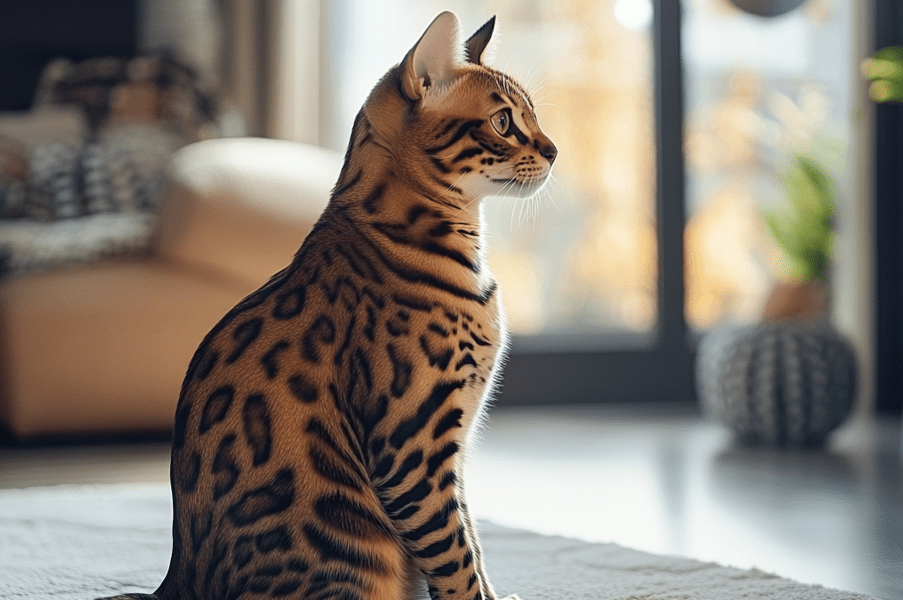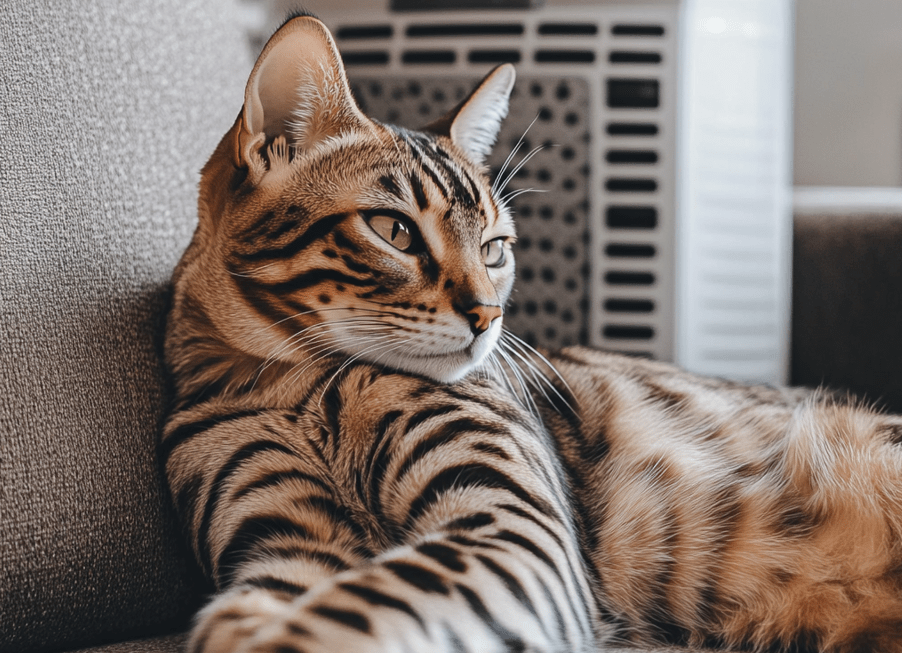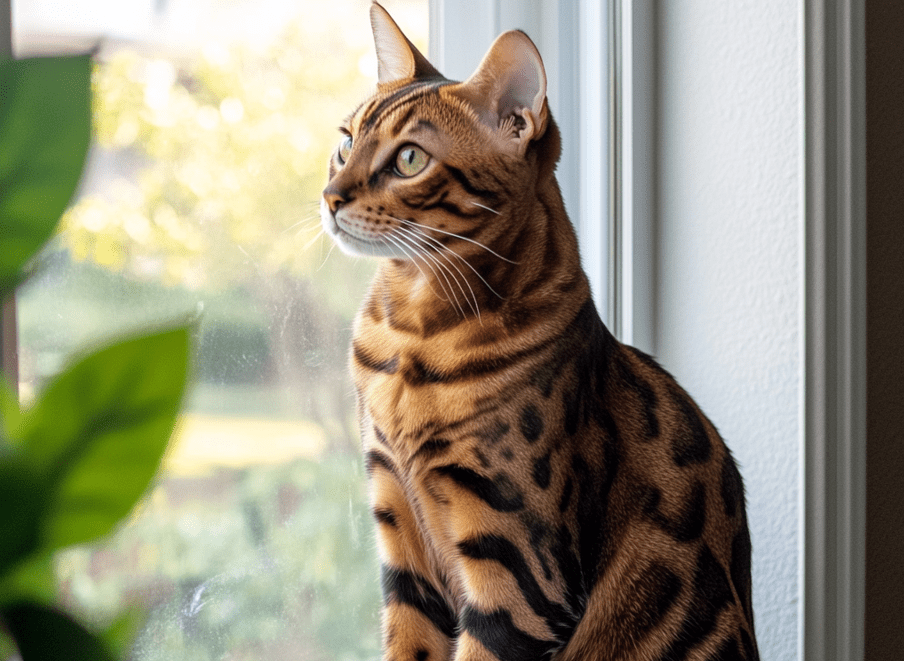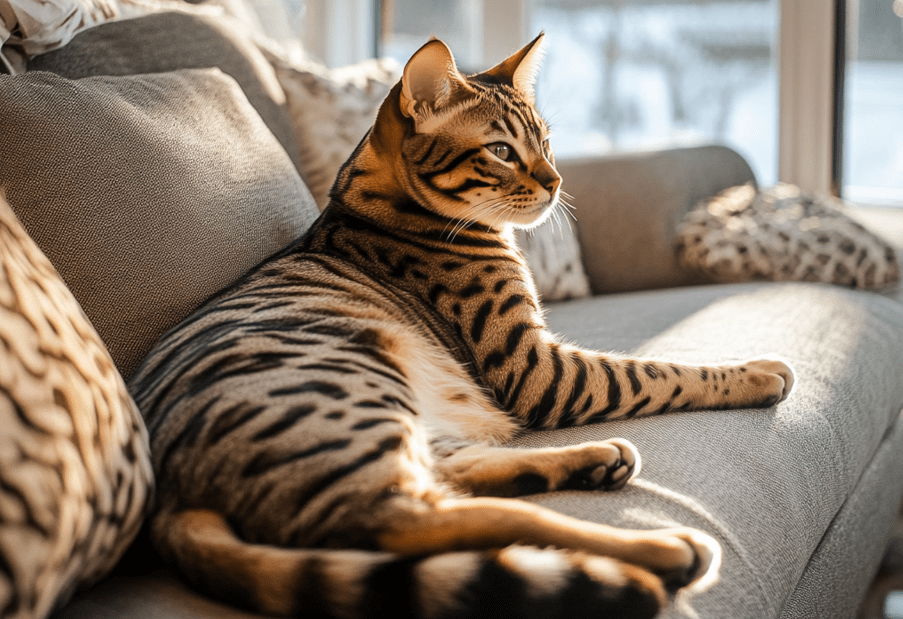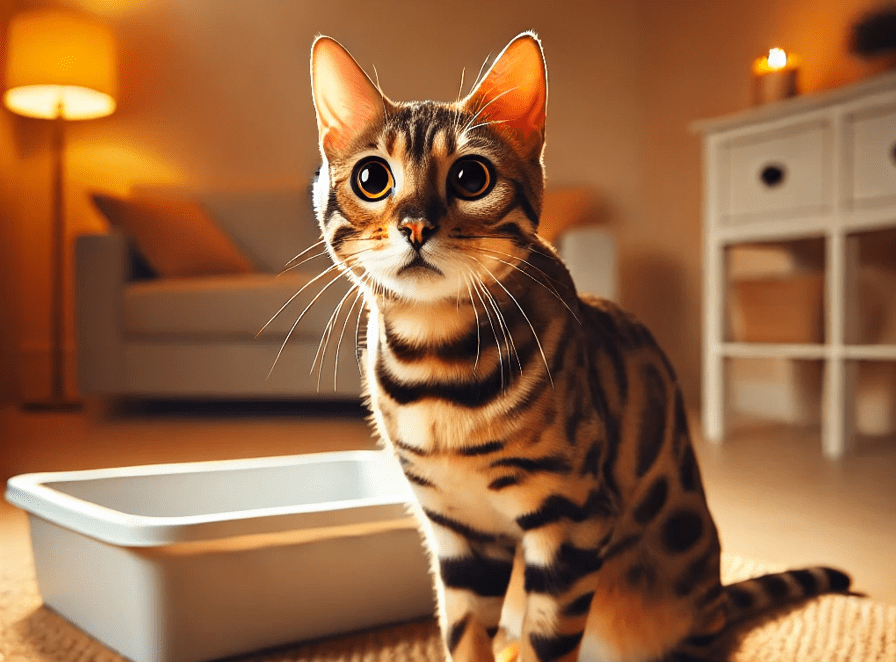
Introduction
Bengal cat litter box avoidance is a common concern among owners of this intelligent and energetic breed. The Bengali population faces behavioural challenges involving their unwillingness to use the designated litter box, despite their fame for their intelligent and vibrant character. Identifying the causes of this behavior becomes critical since it leads to developing solutions to support both domestic environment peace between Bengal cats and their owners.
Various elements, starting with medical problems through environmental stressors and concluding with individual preferences, lead Bengals to avoid their litter boxes. A Bengal will start connecting the litter box to painful experiences after developing health complications like urinary tract infections and bladder stones. The introduction of new pets or any modifications in home routines often causes anxiety that drives Bengals to avoid their litter boxes.
Each Bengal may establish particular preferences about their preferred litter box measurements together with their preferred litters and locations for the box. A poorly maintained litter box along with dirt will discourage Bengals from using the litter box.
The following discussion explains why Bengal cats avoid using their litter boxes and presents step-by-step solutions to these behavioral problems. Empathetic care of your Bengal’s preferences helps develop positive relationships and promotes comfort through environmental security.
Understanding Bengal Cat Litter Box Avoidance
Bengal cats may not use their litter box because of medical conditions, environmental stress, and behavioral problems. The beginning step to solving this issue properly involves understanding all underlying causes. Several primary reasons that cause Bengal cats to avoid their litter box exist, as explained in the following points below:
1.Medical Issues
Health issues constitute one primary cause that prompts cats to avoid using the litter box. Urinary tract infections, along with bladder stones and general health problems, often result in discomfort for cats, which leads them to link the litter box with unwanted pain. The pain experienced during urination by a cat often leads to the cat using different areas to eliminate rather than staying in the litter box. A veterinarian consultation is crucial for Bengals showing signs of litter box avoidance because proper medical treatment usually ends these issues.
2.Environmental Stressors
Bengal cats establish their best well-being inside stable home environments. Transitioning to a different living place, joined by new pets or altered room setup, generates anxiety, which sometimes results in litter box avoidance from Bengals. A cat who encounters noisy conditions or passes through busy areas will likely feel unsafe while using the litter box. The litter box environment of your Bengal cat needs to include a private area with no disruptions to prevent litter box avoidance.
3.Litter Box Preferences
Every Bengal cat selects its unique litter container and material preference. A Bengal might reject the litter box when its dimensions are inadequate or if it is fitted with a cover or contains a disliked litter variety. Testing multiple sizes and types of both litter boxes (including open-top vs. covered) and different litter materials can determine which ones your Bengal cat finds most appealing. Bengals require spacious litter boxes because of their physical characteristics along with their active behavior.
4.Lack of Proper Training
Poor litter box training during their youth can lead Bengal cats to establish harmful habits that cause them to avoid the litter box. A kitten needs early training that involves constant exposure to the litter box during its first weeks of life. Bengals that come into your life without prior house training require retraining. Giving rewards through positive reinforcement can help Bengal cats learn correct habits when using the litter box.
5.Inadequate Number of Litter Boxes
One error owners of cats frequently make involves failing to establish ample litter boxes, which should correspond to the number of cats present in both single-cat dwellings and multi-cat homes. Owners should operate under the principle of supplying a litter box count equivalent to double the number of cats present in their household. The strategy provides every feline with dedicated private areas where they can execute their toileting needs.
6.Behavioral factors
Behavioral sources of anxiety or territorial marking behavior among Bengals contribute to their avoidance of the litter box. The combination of environmental changes with disturbances caused by other pets inside the home makes cats seek to mark their territory outside their designated litter by eliminating them in different areas. Anxiety-related behaviors tend to decline when Bengals live in peaceful surroundings while receiving stimulating activities.
7.Cleaning and Maintenance
Regular cleanliness of the litter box remains fundamental to increasing its usage. The natural cleanliness of cats leads them to avoid using unhygienic or odorous box compartments. Proper waste collection and regular litter exchange tasks will both preserve cleanliness and create a more appealing environment for your Bengal to use the box.
Strategies for Resolving Litter Box Avoidance
Bengal cat litter box avoidance needs treatment from medical examinations, along with environmental adjustments and behavioral modifications. The following methods prove successful when handling this problem:
The first step should be to eliminate urinary tract infections and bladder stones because these medical problems can result in pain and stop Bengals from using their litter box. The health diagnosis should be completed before starting the behavioral treatment intervention.
Bengals typically choose large open boxes, which they can move freely inside them. Storage bins made from transparent material or large-sized litter boxes should be used because the container size and mobility needs of Bengal cats should be accommodated. Your Bengal should never use covered boxes unless they show no resistance when using regular ones.
The litter preferences of Bengals extend to both texture and scent variations. Unscented litter made of fine-grained material resembling sand tends to be the most desirable choice. The cat litter product Dr. Elsey’s Cat Attract promotes proper litter box usage by cats.
Bengal cats require substantial attention to cleanliness because they possess a fastidious nature. Your Bengal cat will use the litter box when you maintain proper cleanliness that includes scooping twice daily together with frequent litter replacement to preserve freshness.
Devote your Bengal’s litter boxes to locations in quiet spots that experience minimal traffic while assuring its safety. Box placement for each home floor ensures Bengal cats experience easy access.
Every Bengal cat should have one litter box available and one additional box for every cat in the household. The rule for multiple cat litter boxes should include one box per cat alongside an additional one to minimize competition and reduce conflicts.
You must lower environmental-stress through consistent routines, and you must supply interactive toys and climbing centers for enrichment purposes. The aromatic particles in pheromone diffusers work as an effective tool for providing a soothing environment.
Conclusion
The above article provides clear guidelines that, when faithfully applied, will help resolve problems with Bengal cats avoiding the litter box while creating peace between both you and your pet.
Developing strategies to solve Bengal cat litter box avoidance becomes vital to preserve peace between pet cats and their owners. A profound understanding of the many causes behind litter box avoidance behavior, including health problems and environmental factors, helps develop effective solutions to solve this issue. Litter box avoidance affects all types of cats since numerous diverse reasons may trigger this behavior.
The implementation of proper veterinary care combined with maintaining and cleaning the litter box setup and a stress-free home environment will substantially improve your Bengal cat’s litter box habits. Understanding specific litter box preferences and placement preferences of your Bengal cat will create substantial improvements in their regular litter box usage.
The successful management of litter box training requires both patience and consistent effort from the ownership. Observing your Bengal while you make mature changes will create positive connections between them and their litter box area. Contacting veterinary professionals as well as cat behavior experts when your best efforts fail will help you receive specific guidance and additional solutions to resolve the challenges.
The establishment of proper living conditions for your Bengal and the resolution of its health-related problems will guarantee both of you have a positive pet-owner experience. An appropriate technique will help you eliminate litter box avoidance so your Bengal cat can join you in a complete and fulfilling companionship.

